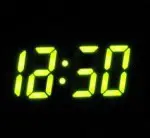
An average person will spend a third of their life in the sleep state. Although a good night’s sleep is essential for optimum health, and lack of sleep can lead to a malady of illnesses, for most people nightly slumber is merely lost time.  A person who lives in to their late 70s will have spend approximately 26 years asleep.
A person who lives in to their late 70s will have spend approximately 26 years asleep.
Why not make that time more productive and entertaining. Why not use it to live out your fantasies by entering the world of lucid dreaming.
Before I show you how to lucid dream in a controlled manner so that you can experience anything you want I will give you a brief explanation of exactly what lucid dreaming is and how it can help you live out your fantasies?
Lucid Dreaming Guide
The simplest, and most scientifically correct, explanation for the term “lucid dreaming” is that it is merely the experience of being aware that you are dreaming.
We have all had the experience of realising that we are dreaming at some stage without being able to do anything but drift back into the dreamy state. Technically this is a lucid dream.
Therefore merely being aware that you are dreaming means that you are experiencing a lucid dream.
However, in popular culture the usage of the term lucid dreaming means so much more than just being aware that you are sleeping and experiencing a dream. Outside of the medical and scientific fields lucid dreaming means not only the realization that you are in a dream state but it refers to also having the ability to consciously interact with the dream environment and even control it.
Lucid dreaming is a skill that you can easily learn if you are willing to perform some simple tasks consistently.
When one enters a lucid dream state and consciously takes control over it the dream landscape bursts into real 3D life and everything takes on a very solid and real structure to your senses. It feels like real life only a lot more magical because you can 100% control it.
How to Lucid Dream in 3 Steps
Learning to lucid dream is not as difficult as you may imagine. In fact it is pretty easy as long as you are willing to put in the small amount of effort required on a consistent basis.
Persistence is the key to acquiring the skill of controlled dreaming.
There are several ways to go about teaching yourself this skill from lucid dreaming induction techniques to false awakenings but the most effective way to experience lucid dreaming quickly is to follow 3 simple steps.

- Set an intention to lucid dream.
- Keep a dream journal.
- Perform reality checks throughout the day.
Let’s look at each of these three steps more closely.
Set Your Intention to Have a Lucid Dream
Many people mistakenly skip this important step because they cannot see how consciously deciding to lucid dream can affect their ability to control their dream state. Do not make this mistake.
 Dreaming takes place in the mind. It is therefore necessary to set your mind to the task in hand. The mere act of deciding that you are going to learn to lucid dream is often enough to trigger a lucid dream by itself.
Dreaming takes place in the mind. It is therefore necessary to set your mind to the task in hand. The mere act of deciding that you are going to learn to lucid dream is often enough to trigger a lucid dream by itself.
So, set an intention to become a lucid dreamer.
Write your intention down in a new notebook bought for the purpose of recording your dreams. This will become your dream journal.
On the very first page write:
“I [state your name] intend to become a lucid dreamer. I will not stop in my efforts until I am a lucid dreamer. As a learn the skills needed to control my dreams I will intentionally direct my dream state in any way I see fit and I will vividly recall my dreams when I awaken.”
Speak your intention aloud and then sign it.
This is your contract with yourself.
Keeping a Dream Journal
The purpose of keeping a dream journal is to develop the ability of remembering your dreams.
The skill of remembering dreams, both lucid and normal dreams, is necessary for 2 reasons:
- Learning to remember your ordinary dreams improves your awareness of the dream state.
- Having a magical experience in a lucid dream is of no use if you can’t remember it!
A dream journal can be an elaborate leather-bound hard-backed book or a simple lined notepad you can get for less than a dollar.
The book itself is not that important but by all means use an expensive hard covered book if it feels special to you.
Keep the book beside your bed with a pen or pencil and within your reach so you have access to it without having to get out of bed.
Every day when you awaken the first thing you should do is try to recall your last dream. Write it down in as much details as possible scribbling diagrams or pictures if it helps you to recall the dream.
As you build up a list of recalled dreams you will probably start to see patterns emerging in your dreams such as recurring locations, people, events or objects.
As you continue to recall your dreams your mind will naturally anchor the recollection of these patterns to thoughts about dreams. Then when you are in the dream itself and encounter one of these patterns you may realise that you are dreaming and immediately go lucid.
 If you are one of those people who finds it difficult to remember to use your dream diary and only realize you were suppose to write in it once you have got out of bed then you will be only too aware that those few minutes is more than enough to forget your entire dream experience.
If you are one of those people who finds it difficult to remember to use your dream diary and only realize you were suppose to write in it once you have got out of bed then you will be only too aware that those few minutes is more than enough to forget your entire dream experience.
If this happens to you several times then there is a simple trick you can use to force your brain to remember your intention to recall your dream immediately upon waking. In NLP it is known as “anchoring” because you will anchor the image of your dream journal to an object in your sleeping space.
Choose an object in your sleeping area that is visible to you from your sleeping position. Each night when you retire to bed look at this object for a few seconds taking it is shape, colours and texture. Then close your eyes and visualize your dream journal in a way that is connected to the object.
Example of Using the Anchor Technique
For example, if you can see a wall painting from your bed imagine that a child has drawn a picture of your dream journal over the painting (the worse the sketch the better as you want to use a strong image to associate the dream journal with the painting).
Repeat this process over a period of a minute or 2.
If you do this for just a few nights (or even during the day) you will find that you cannot look at that picture without thinking about your dream journal.
This means when you awaken from sleep and see that painting (or whatever object you have chosen) your brain will immediately remind you of your dream journal and you can then proceed to write down your dream recollections.
Recalling Your Dreams
Don’t worry if you do not recall your dreams at first or if they are haphazard and disjointed.
If you continue using your dream journal your ability to recall your dreams will get better. When you do experience your first lucid dream it is much more likely that you will remember most details of it because it will feel just as real as the world around you right now.
Lucid Dreaming Reality Checks
The reality check is one of the best tools available to you and it’s free.
A reality check is basically exactly what it sounds like. You will check to see if what you are experiencing is real or a dream.
During the waking day you should ask yourself the simple question, “Am I dreaming?” Before you automatically answer that question with a “no” look around your surroundings for confirmation that you may in fact be dreaming.

This may seem like a silly thing to do and a waste of time as it is all too apparent when to you when you are awake and you don’t need to check to see if things are real but that is not the main reason for doing these checks.
When you perform actions repeatedly in the “real” world these actions very often appear within the dream state. In fact the more an action becomes automatic and consistent in the waking world the higher are the chances that you will encounter the same action within a dream.
For this reason you should perform a reality check at least once per hour or a minimum of 8 times per day. The more you do it the more likely you will be to do it in a dream and become lucid.
Keep asking yourself “Am I dreaming” in the waking world and you will find yourself asking the same question in your dreams! This is why it is important to not just answer “no” automatically but to look for signs that you may be in a dream.
Dream Signals
 Once you ask yourself if you are dreaming you can look for dream signals that will show if you are awake or asleep. There are several ways to do this quickly.
Once you ask yourself if you are dreaming you can look for dream signals that will show if you are awake or asleep. There are several ways to do this quickly.
The first thing to do is question your surroundings and circumstances.
Are things not quite right or out of place?
Is there something happening that could not possible happen in the real world?
Are you doing something that is impossible to do in the real world? … like flying through the air like superman.
 One of those weird facts about dreams is that you cannot tell the time in the dream state.
One of those weird facts about dreams is that you cannot tell the time in the dream state.
Time is a concept that is completely alien to your subconscious mind and it therefore cannot model this within the dream world.
So a great reality check to perform is to look at your watch or a digital clock.
Is there anything strange about the numbers?
The Benefits of Lucid Dreaming
The benefits of lucid dreaming are well documented and range from being able to perfect newly acquired skills (by practicing them in the dream state) to conquering nightmares and learning more about the inner workings of your own mind (by even being analysed by Carl Jung or Sigmund Freud in a lucid dream).
However, most people use lucid dreaming as a form of entertainment and there is none better.
Once you experience your first fantasy in the lucid dream state you will realise that no other form of entertainment compares to it because now you can actually create and live out your own entertainment.
So what are you waiting for? Take the plunge and start to explore the world of lucid dreams.
